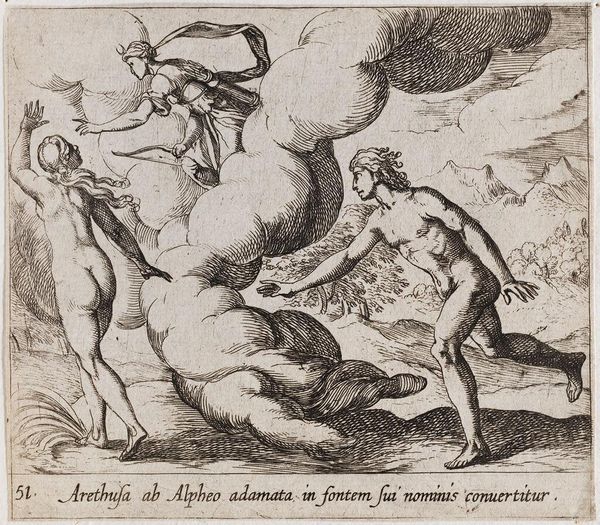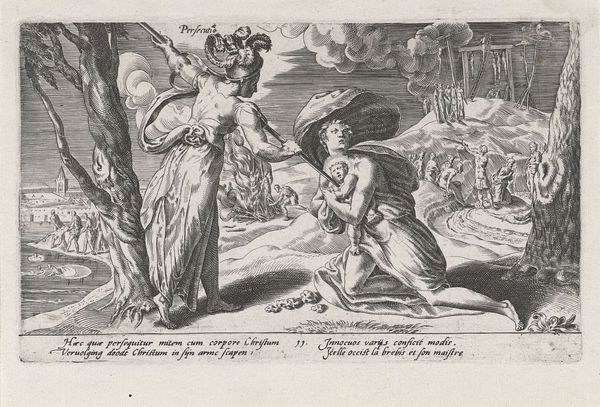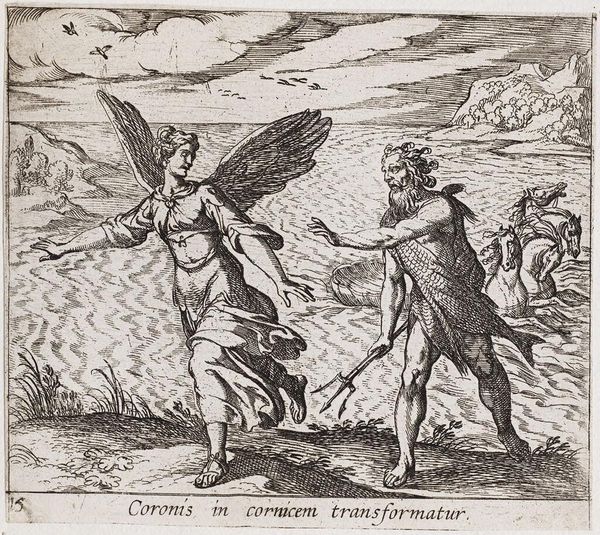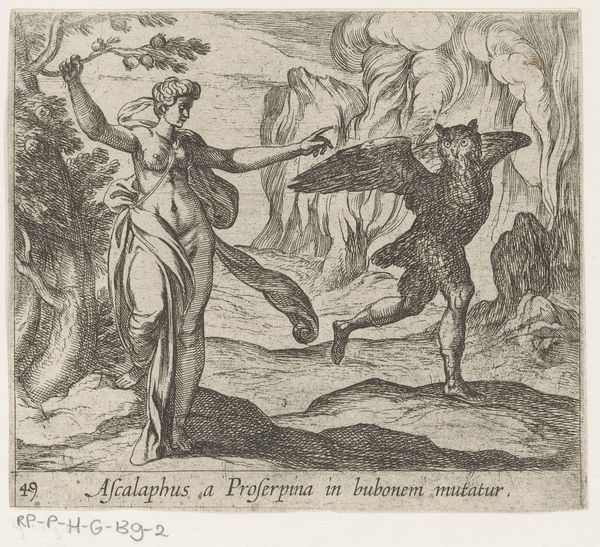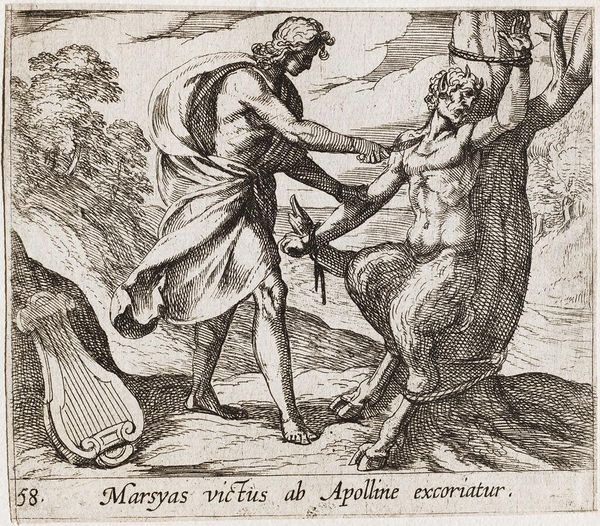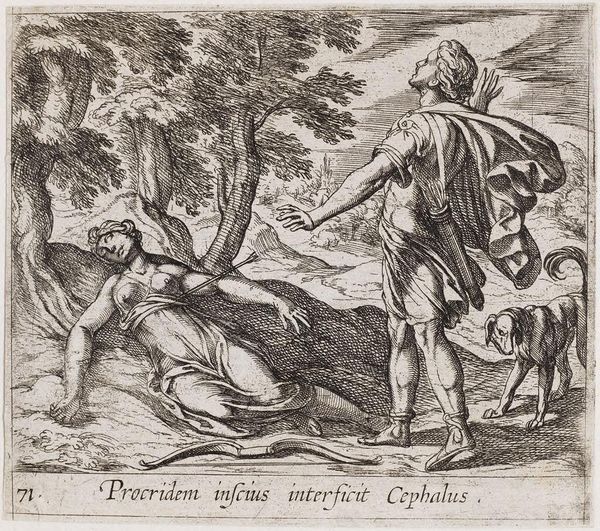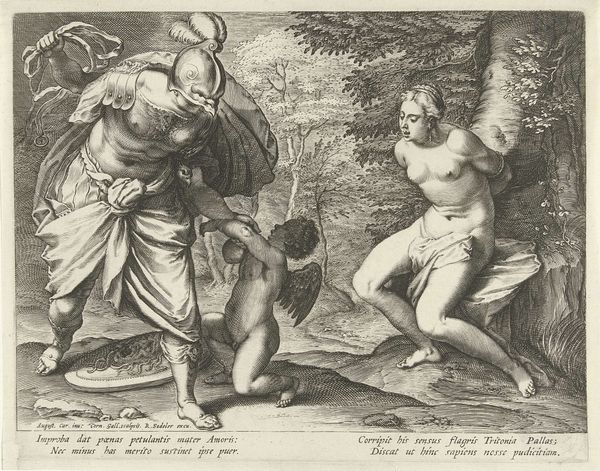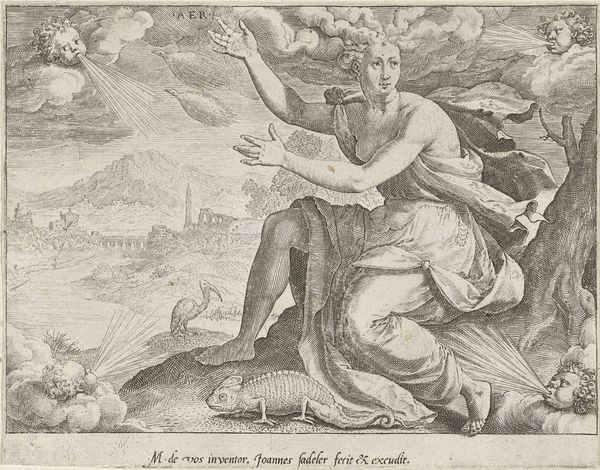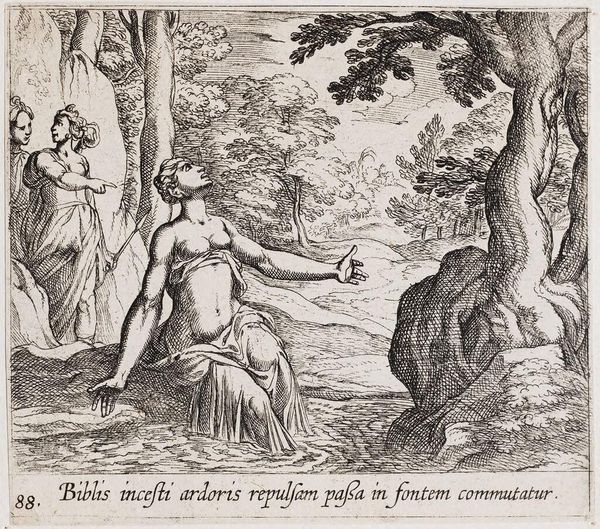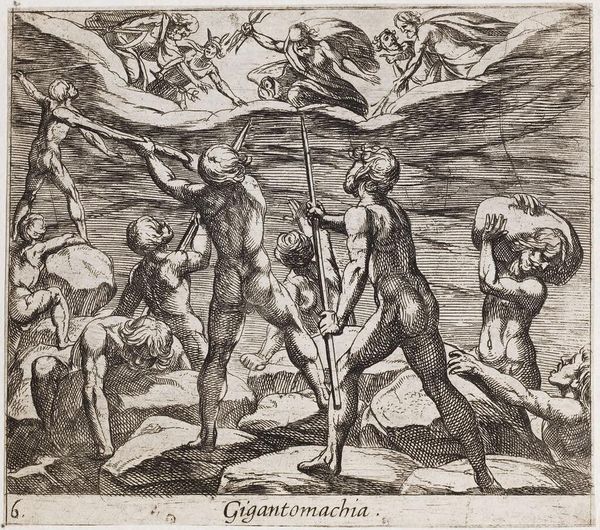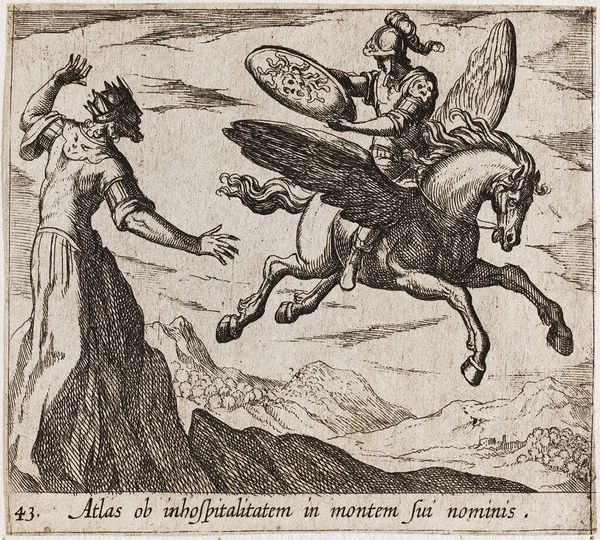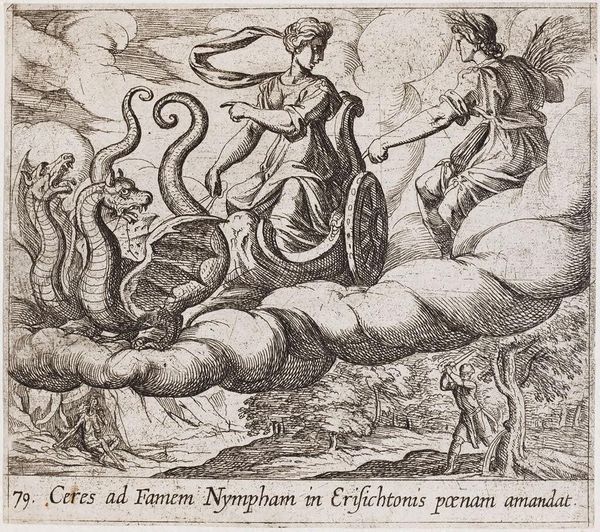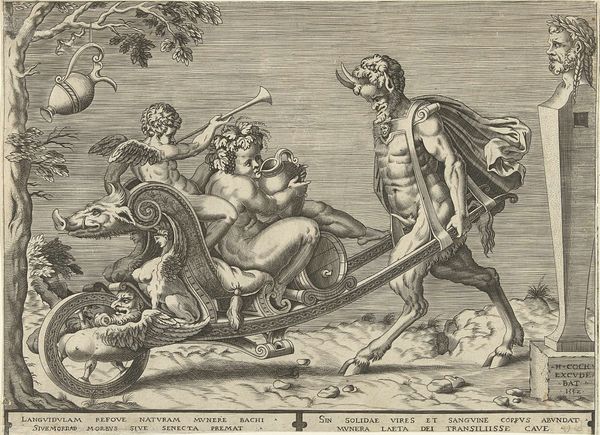
Dimensions: 10.5 x 12 cm (4 1/8 x 4 3/4 in.)
Copyright: CC0 1.0
Curator: This etching by Antonio Tempesta, likely created sometime between 1572 and 1630, depicts Proserpina turning Ascalaphus into an owl. It's quite small, just a few inches in both dimensions. Editor: I’m struck by the palpable sense of motion. The turning figure, the billowing fabric – it creates a dynamic scene, despite being a static image. Curator: The density of the etching marks builds up forms and shadows – notice how Tempesta used cross-hatching to describe the landscape and the texture of Ascalaphus' feathers. Consider, too, the labor involved in creating such a detailed image by hand on a metal plate. Editor: It's interesting how the owl-man retains human features – suggesting the persistence of memory and identity, even after transformation. The owl itself has long been a symbol of knowledge and wisdom but also of darkness. Curator: Yes, and the printmaking process itself allows for reproducibility and dissemination of these classical narratives. It democratizes access to these stories, making them available beyond elite circles. Editor: Seeing the transformation visualized like this, you really feel the weight of Proserpina's power and the eternal consequences of Ascalaphus' actions. Curator: It is a small print, but it speaks volumes about the production of images, labor, and the classical tradition. Editor: A fascinating visual encapsulation of ancient myth and enduring symbols.
Comments
No comments
Be the first to comment and join the conversation on the ultimate creative platform.
